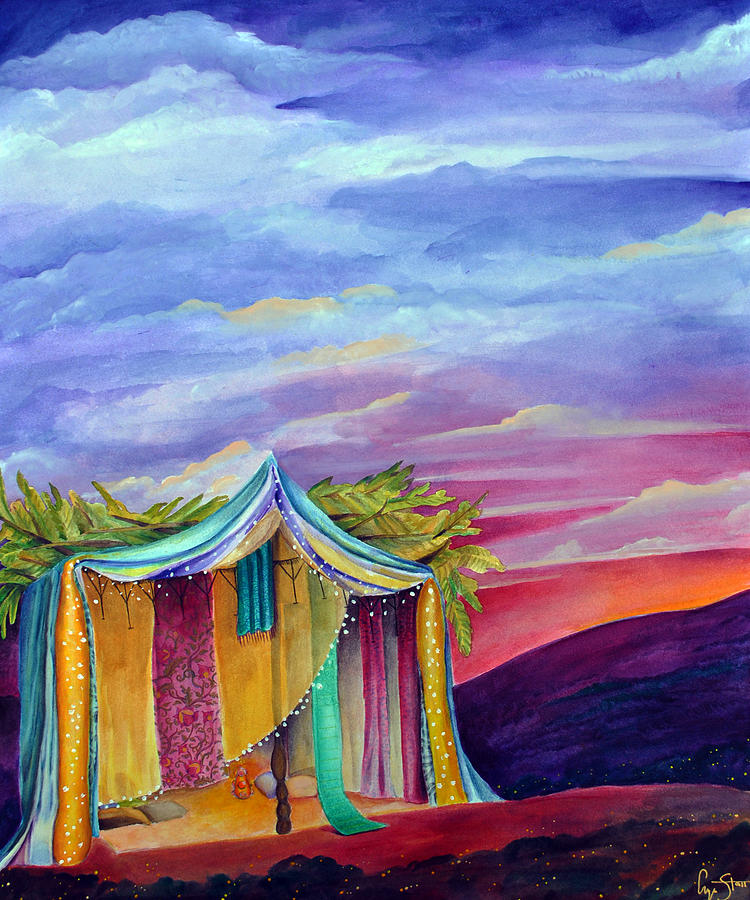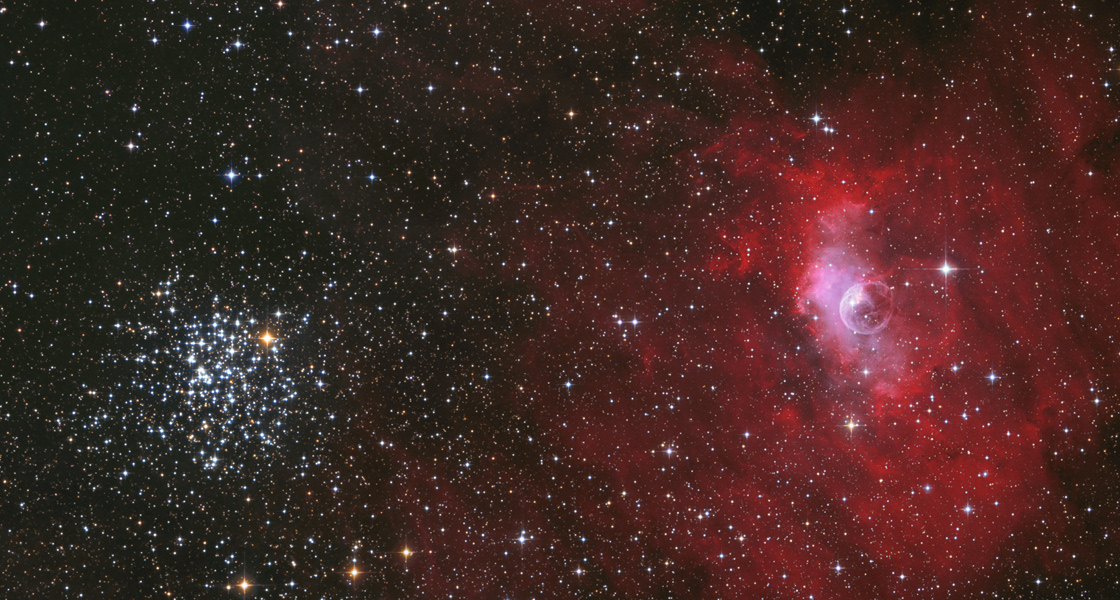Blog
Meet NGC 5728, a spiral galaxy around 130 million light-years from Earth. This image was captured using Hubble’s Wide Field Camera 3 (WFC3), which is extremely sensitive to visible and infrared light. Therefore, this image beautifully captures the regions of NGC 5728 that are emitting visible and infrared light. However, there are many other types of light that galaxies such as NGC 5728 can emit, which WFC3 cannot see. In this image, NCG 5728 appears to be an elegant, luminous, barred spiral galaxy. What this image does not show, however, is that NGC 5728 is also a monumentally energetic type of galaxy, known as a Seyfert galaxy. This extremely energetic class of galaxies are powered by their active cores, which are known as active galactic nuclei (AGNs). There are many different types of AGNs, and only some of them power Seyfert galaxies. NGC 5728, like all Seyfert galaxies, is distinguished from other galaxies with AGNs because the galaxy itself can be seen clearly. Other types of AGNs, such as quasars, emit so much radiation that it is almost impossible to observe the galaxy that houses them. As this image shows, NGC 5728 is clearly observable, and at optical and infrared wavelengths it looks quite normal. It is fascinating to know that the galaxy’s centre is emitting vast amounts of light in parts of the electromagnetic spectrum that WFC3 just isn’t sensitive to! Just to complicate things, the AGN at NGC 5728’s core might actually be emitting some visible and infrared light — but it may be blocked by the dust surrounding the galaxy’s core. Links Video More than Meets the Eye

Robert “Robbie” Shakespeare (born 27 September 1953) is a Jamaican bass guitarist and record producer, best known as the one half of the reggae rhythm section and production duo Sly and Robbie, with drummer Sly Dunbar. Regarded as one of the most influential reggae bassists,[2]Shakespeare is also known for his creative use of electronics and production effects units. He is sometimes nicknamed “Basspeare”.
As a part of Sly and Robbie, Shakespeare worked with various reggae artist such as U-Roy, Peter Tosh, Bunny Wailer, Dennis Brown, Gregory Isaacs, Sugar Minott, Augustus Pablo, Yellowman and Black Uhuru. His production work also extended beyond the reggae genre, covering various pop and rock artists such as Mick Jagger, Bob Dylan, Jackson Browne, Cyndi Lauper, Joe Cocker, Yoko Ono, Serge Gainsbourg and Grace Jones. Prior to his involvement in Sly and Robbie, he was a member of the session groups The Revolutionaries and The Aggrovators. Shakespeare grew up in East Kingston, Jamaica. He had a musical family, so that “his family home was a rehearsal and hangout spot for a variety of upcoming musicians and singers.” His brother Lloyd had a band called the Emotions which rehearsed in the house. Shakespeare’s first instrument was an acoustic guitar that was always present in the home. Later, the bass player Aston “Family Man” Barrett came into his yard, as it was near a popular location for selling marijuana. Shakespeare had been trying acoustic guitar and drums, but when he heard Family Man’s bass playing, he was attracted to the deep bass sound. Shakespeare recalled saying “I wan fi learn how to play this thing [bass]. You haffi teach me”. and Barrett agreed to give Shakespeare bass lessons.
more...Robert Roland Chudnick (September 27, 1927 – May 27, 1994), known professionally as Red Rodney, was an American jazz trumpeter.
Born in Philadelphia, Pennsylvania, he became a professional musician at 15, working in the mid-1940s for the big bands of Jerry Wald, Jimmy Dorsey, Georgie Auld, Elliot Lawrence, Benny Goodman, and Les Brown. He was inspired by hearing Dizzy Gillespie and Charlie Parker to change his style to bebop, moving on to play with Claude Thornhill, Gene Krupa, and Woody Herman. He was Jewish.
He accepted an invitation from Charlie Parker to join his quintet. and was a member of the band from 1949 to 1951. Being the only white member of the group, when playing in the southern United States he was billed as “Albino Red” as a ruse to avoid prejudice against mixed race musical combos. During this time he recorded extensively.
During the 1950s, he worked as a bandleader in Philadelphia and recorded with Ira Sullivan. He became addicted to heroin and started a pattern of dropping in and out of jazz.
During 1969, Rodney played in Las Vegas with fellow Woody Herman colleague, trombonist Bill Harris, as part of the Flamingo casino house band led by Russ Black. Similar work continued through 1972.
more...Earl Rudolph “Bud” Powell (September 27, 1924 – July 31, 1966) was an American jazz pianist and composer. Along with Charlie Parker, Thelonious Monk, and Dizzy Gillespie, Powell was a leading figure in the development of modern jazz. His virtuosity led many to call him the Charlie Parker of the piano. Powell was also a composer, and many jazz critics credit his works and his playing as having “greatly extended the range of jazz harmony”.
Powell’s father was a stride pianist. Powell started classical piano lessons at the age of five. His teacher, hired by his father, was a West Indian man named Rawlins. At 10 years of age, Powell showed interest in the swing music that could be heard all over the neighborhood. He first appeared in public at a rent party, where he mimicked Fats Waller‘s playing style. The first jazz composition that he mastered was James P. Johnson‘s “Carolina Shout”. Powell’s older brother, William, played trumpet and violin, and by the age of 15 Powell was playing in William’s band. Powell heard Art Tatum on the radio and tried to match his technique. Powell’s younger brother, Richie Powell, was also a noted bebop pianist.
more...The round star, known as MWC 922 and possibly part of a multiple star system, appears at the center of the Red Square Nebula. The featured image combines infrared exposures from the Hale Telescope on Mt. Palomar in California, and the Keck-2 Telescope on Mauna Kea in Hawaii. A leading progenitor hypothesis for the square nebula is that the central star or stars somehow expelled cones of gas during a late developmental stage. For MWC 922, these cones happen to incorporate nearly right angles and be visible from the sides. Supporting evidence for the conehypothesis includes radial spokes in the image that might run along the cone walls. Researchers speculate that the cones viewed from another angle would appear similar to the gigantic rings of supernova 1987A, possibly indicating that a star in MWC 922 might one day itself explode in a similar supernova.

Sukkot is celebrated by, first of all, building a sukkah. Jews are required to eat in the sukkah for eight days (seven days in Israel), and some even sleep in the sukkah for the duration of the holiday. The sukkah is decorated and the first day is considered a holy day in which most forms of work are forbidden. The rabbis dictated that arbat ha’minim (four species) should be held together and waved during the holiday. These are based on four plants mentioned in the Bible, and the rabbinic version includes the following: etrog (fruit of the citron tree), lulav (palm frond), hadas (leaves from the myrtle tree), and aravah (leaves from the willow tree). This waving ceremony was performed at the Temple in the ancient world.
The seventh day of Sukkot is called Hoshanah Rabah. On that day in the synagogue Jews circle the room seven times while the arbat ha’minim are held and special prayers are recited.

Trio Kabob with Dawn Doering, Kim Salisbury and mick laBriola will perform for a Sukkot celebration at Mt Zion Temple in St Paul on Sunday September 26th from noon-2pm. Performing a Sephardic, Arabic, Turkish and Bulgarian repertoire.
more...Victor Edward Jurusz Jr. (September 26, 1953 – December 31, 2019), known professionally as Vic Juris, was an American jazz guitarist.
Juris was born in Jersey City, New Jersey, but he moved with his family to Parsippany early in his life. In 1963, at the age of 10, he began learning guitar. At 11, he studied guitar at the home of his teacher, Ed Berg, and got interested in jazz listening to Berg’s records of guitarists Django Reinhardt, Jim Hall, Barney Kessel, Jimmy Raney, and Johnny Smith. When asked about albums that made an impact on him as a kid, Juris cites Rubber Soul by The Beatles, The Dynamic Duo by Wes Montgomery and Jimmy Smith, Larry Coryell‘s debut album, and Are You Experienced by Jimi Hendrix. In his teens he played the rock music of the 1960s. When he was 19, he met blind saxophonist Eric Kloss and they became friends.[2] He made his first recording on Kloss’s album Bodies’ Warmth (Muse, 1975). Around the same time, he met guitarist Pat Martino, who became a friend and mentor.
https://www.youtube.com/watch?v=11sWjhqE_ko
more...Romano Mussolini (26 September 1927 – 3 February 2006) was an Italian jazz pianist, painter and film producer. He was the fourth and youngest son of Benito Mussolini, who was the fascist dictator of Italy from 1925 until 1943.
A native of Villa Carpena, Forlì (Emilia-Romagna), Romano Mussolini studied music as a child, playing classical pieces with his father on the violin.
After World War II, he started playing jazz under the assumed name “Romano Full” and by the mid-1950s, he had formed a trio. Mussolini released a self-titled record (featuring Lilian Terry on vocals and trumpeter Nunzio Rotondo) through RCA Records in 1956. By the 1960s, he had formed the “Romano Mussolini All Stars”, which became one of Italy’s foremost jazz bands.[citation needed]
The All Stars recorded a well-received record Jazz Allo Studio 7 in 1963 with At the Santa Tecla following a year later. Mussolini’s band toured internationally with artists including Dizzy Gillespie, Duke Ellington, Helen Merrill and Chet Baker. In the 1990s, Mussolini recorded two more albums, Perfect Alibi and Soft and Swing.
more...George Gershwin (/ˈɡɜːrʃ.wɪn/; born Jacob Gershwine; September 26, 1898 – July 11, 1937 Brooklyn, NY) was an American composer and pianist, whose compositions spanned both popular and classical genres. Among his best-known works are the orchestral compositions Rhapsody in Blue (1924) and An American in Paris (1928), the songs “Swanee” (1919) and “Fascinating Rhythm” (1924), the jazz standards “Embraceable You” (1928) and “I Got Rhythm” (1930), and the opera Porgy and Bess (1935), which included the hit “Summertime“.
Gershwin studied piano under Charles Hambitzer and composition with Rubin Goldmark, Henry Cowell, and Joseph Brody. He began his career as a song plugger but soon started composing Broadway theater works with his brother Ira Gershwin and with Buddy DeSylva. He moved to Paris intending to study with Nadia Boulanger, but she refused him, afraid that rigorous classical study would ruin his jazz-influenced style. He subsequently composed An American in Paris, returned to New York City and wrote Porgy and Bess with Ira and DuBose Heyward. Initially a commercial failure, it came to be considered one of the most important American operas of the twentieth century and an American cultural classic.
Gershwin moved to Hollywood and composed numerous film scores. He died in 1937 of a malignant brain tumor. His compositions have been adapted for use in film and television, with several becoming jazz standards recorded and covered in many variations.
more...The Bubble Nebula at the right with open star cluster M52. The pair would be lopsided on other scales, though. Embedded in a complex of interstellar dust and gas and blown by the winds from a single, massive O-type star, the Bubble Nebula, also known as NGC 7635, is a mere 10 light-years wide. On the other hand, M52 is a rich open cluster of around a thousand stars. The cluster is about 25 light-years across. Seen toward the northern boundary of Cassiopeia, distance estimates for the Bubble Nebula and associated cloud complex are around 11,000 light-years, while star cluster M52 lies nearly 5,000 light-years away. The wide telescopic field of view spans about 1.5 degrees on the sky or three times the apparent size of a full Moon.

John Taylor (25 September 1942 – 17 July 2015) was a British jazz pianist, born in Manchester, England, who occasionally performed on the organ and the synthesizer.
John Taylor was a self-taught pianist. With his family, he moved from Manchester, first to the Midlands and then to Hastings where he played locally. In 1964, Taylor became a civil servant, moved to London and became involved in the free jazz scene.
more...Erik Darling (September 25, 1933 – August 3, 2008) was an American songwriter and a folk music artist. He was an important influence on the folk scene in the late 1950s and early 1960s.
Darling was born in Baltimore, Maryland, United States. Inspired by the folk music group The Weavers, in the 1950s, he formed The Tunetellers, which evolved into The Tarriers with actor/singer Alan Arkin. Their version of the “Banana Boat Song” reached No. 4 on the Billboard chart.
In April 1958, Darling replaced Pete Seeger in The Weavers, and he continued working club dates with The Tarriers until November 1959. Darling also recorded three solo albums. His second solo effort, True Religion, for Vanguard in 1961 was influential on younger folkies of the day. In 1956, he accompanied the Kossoy Sisters on their album Bowling Green. Additional instrumental work is featured on Banjo Music of the Southern Appalachians (Olympic Records, undated, with Darling’s first name misspelled as Eric on the album cover). Darling left the Weavers in June 1962 to work as a soloist, on the emerging coffeehouse circuit. That summer he formed the jazz-folk trio The Rooftop Singers with longtime friend Bill Svanoe and jazz singer Lynn Taylor. Intended as a studio-only project for Vanguard, the group landed an unexpected number one pop hit with a cover of Gus Cannon‘s 1929 song “Walk Right In“. Don McLean, who became friends with Darling in 1961, looked back on Darling as “a genuine philosopher and perfectionist.” He said “I appreciated the time he spent with me so long ago. Undivided mental attention to every aspect of music making and performing is a hallmark of Erik’s work, and I believe some of that rubbed off on me.”
In 1967, Darling and Paul Bennett were co-credited for writing the song “Babe I’m Gonna Leave You,” by Quicksilver Messenger Service, which appears to be a medley of Darling’s 1958 song “St. John’s River” and Joan Baez’s recording of “Babe I’m Gonna Leave You“, originally written by Anne Bredon. He died in Chapel Hill, North Carolina, from Burkitt’s lymphoma at the age of 74.
more...Samuel Carthorne Rivers (September 25, 1923 – December 26, 2011) was an American jazz musician and composer. He performed on soprano and tenor saxophones, bass clarinet, flute, harmonica and piano.
Active in jazz since the early 1950s, he earned wider attention during the mid-1960s spread of free jazz. With a thorough command of music theory, orchestration and composition, Rivers was an influential and prominent artist in jazz music.
Rivers was born in El Reno, Oklahoma, United States. His father was a gospel musician who had sung with the Fisk Jubilee Singers and the Silverstone Quartet, exposing Rivers to music from an early age. His grandfather was Marshall W. Taylor, a religious leader from Kentucky. Rivers was stationed in California in the 1940s during a stint in the Navy. Here he performed semi-regularly with blues singer Jimmy Witherspoon. Rivers moved to Boston, Massachusetts in 1947, where he studied at the Boston Conservatory with Alan Hovhaness.
He performed with Quincy Jones, Herb Pomeroy, Tadd Dameron and others.
more...Dmitri Dmitriyevich Shostakovich (25 September [O.S. 12 September] 1906 – 9 August 1975) was a Soviet composer and pianist. He is regarded as one of the major composers of the 20th century, with a unique harmonic language and a historic importance due to his years of work under Stalin.
Shostakovich achieved fame in the Soviet Union under the patronage of the Soviet chief of staff Mikhail Tukhachevsky, but later had a complex and difficult relationship with the government. Nevertheless, he received accolades and state awards and served in the Supreme Soviet of the RSFSR (1947) and the Supreme Soviet of the Soviet Union (from 1962 until his death).
A polystylist, Shostakovich developed a hybrid voice, combining a variety of different musical techniques into his works. His music is characterized by sharp contrasts, elements of the grotesque, and ambivalent tonality; he was also heavily influenced by the neoclassical style pioneered by Igor Stravinsky, and (especially in his symphonies) by the late Romanticism of Gustav Mahler.
Shostakovich’s orchestral works include 15 symphonies and six concerti. His chamber output includes 15 string quartets, a piano quintet, two piano trios, and two pieces for string octet. His solo piano works include two sonatas, an early set of preludes, and a later set of 24 preludes and fugues. Other works include three operas, several song cycles, ballets, and a substantial quantity of film music; especially well known is the “Waltz No. 2” from the Suite for Variety Orchestra, as well as the suite of music extracted from The Gadfly.
more...More Posts
- Paco de Lucía
- Frank Zappa
- Hank Crawford
- World Music Fabio Bergamini
- Daily Roots Junior Delgado
- Historic Reality
- Mr Natural Santa
- Billy Bragg
- Mount Zion Hiddur Tefillah Shabbat Service
- Cosmos NGC 7380
- Alan Parsons
- Larry Willis
- Daily Roots Leroy Smart
- Flamenco Fridays Camerón y Paco de Lucia
- Santa, Jesus & Coke
- Jack Kerouac Misfits
- Cosmos Comet/2021 A1
- Édith Piaf
- Kermit Ruffins
- Lenny White